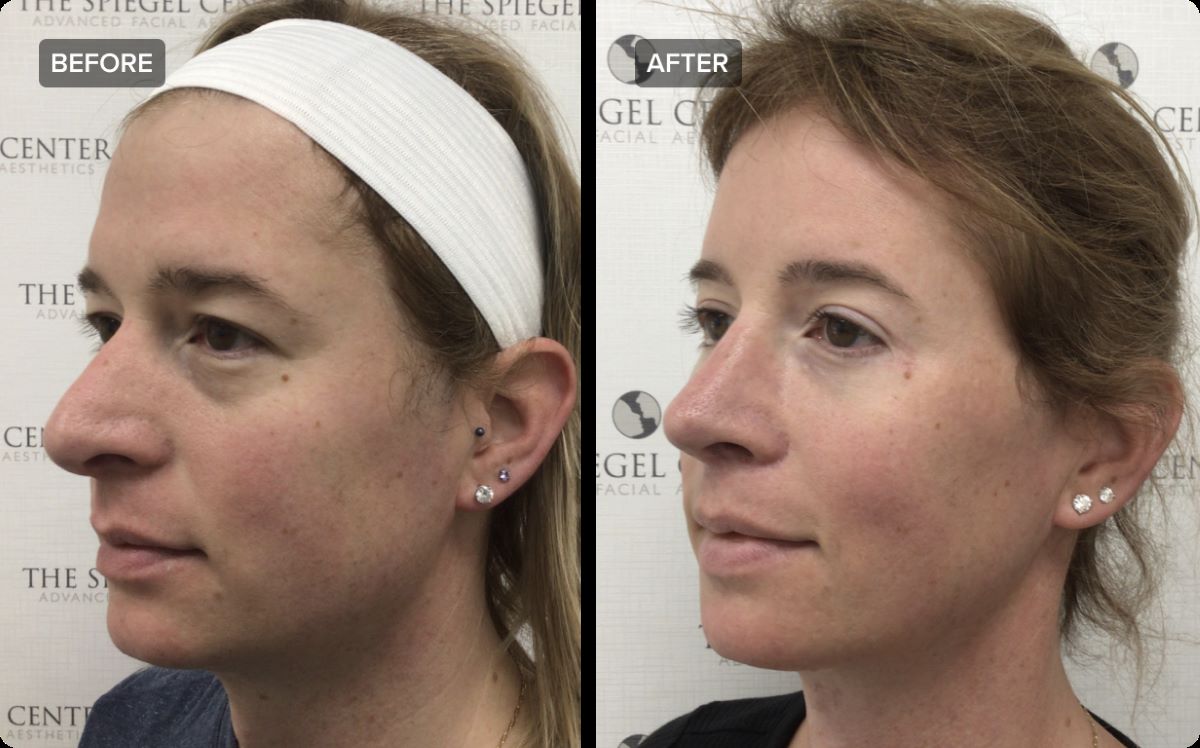

Finance
How To Get Top Surgery Covered By Insurance
Published: November 18, 2023
Looking to finance your top surgery? Learn how to navigate the insurance process and get your gender-affirming procedure covered.
(Many of the links in this article redirect to a specific reviewed product. Your purchase of these products through affiliate links helps to generate commission for LiveWell, at no extra cost. Learn more)
Table of Contents
- Introduction
- Understanding Top Surgery
- Insurance Coverage for Top Surgery
- Steps to Get Top Surgery Covered by Insurance
- Research insurance policies
- Verify medical necessity
- Consult with a qualified surgeon
- Obtain documentation and letters of recommendation
- Submit pre-authorization request
- Follow up with the insurance company
- Appeal if necessary
- Conclusion
Introduction
Top surgery, also known as chest reconstruction surgery, is a life-changing procedure for individuals who identify as transgender or non-binary. It involves the removal of breast tissue to create a more masculine or gender-affirming chest contour. For many people, top surgery is an important step in their gender affirmation journey, helping to alleviate dysphoria and improve overall well-being.
While the physical and emotional benefits of top surgery are evident, the financial aspect can be a major concern for many individuals. Fortunately, insurance coverage for top surgery has become more accessible in recent years, recognizing the importance of gender-affirming healthcare. Understanding the steps to navigate insurance coverage for top surgery is crucial to ensure financial support for this essential medical procedure.
This article aims to guide individuals through the process of getting top surgery covered by insurance, providing valuable insights and helpful tips. It is essential to note that insurance coverage and requirements can vary greatly depending on your insurance provider, policy, and geographical location. Therefore, it is crucial to consult with your insurance provider and a qualified surgeon to understand the specific criteria and guidelines.
Understanding Top Surgery
Top surgery is a surgical procedure that involves the removal of breast tissue and reshaping the chest to create a more masculine or gender-affirming appearance. It is typically pursued by transgender men, non-binary individuals, and some gender-diverse individuals.
There are different techniques used in top surgery, including double incision, periareolar, keyhole, and inverted-T. The choice of technique depends on factors such as the size of the breasts and the desired results. During the procedure, excess breast tissue is removed, the nipples are resized and repositioned if necessary, and the chest is contoured to create a more masculine appearance.
Top surgery is often viewed as a significant step in gender affirmation and can have profound effects on an individual’s mental health and overall well-being. It helps to alleviate gender dysphoria, increase self-confidence, and improve body image. Many individuals report feeling more comfortable and authentic in their bodies after undergoing top surgery.
It is essential to note that top surgery is a major surgical procedure that requires careful consideration and consultation with a qualified surgeon. It is crucial to thoroughly research surgeons, review their qualifications and experience, and schedule consultations to discuss your goals and expectations. Your surgeon will evaluate your suitability for the procedure and recommend the most appropriate surgical technique based on your individual needs.
Insurance Coverage for Top Surgery
Insurance coverage for top surgery has evolved over the years, with many insurance companies recognizing the medical necessity and importance of gender-affirming procedures. However, it is important to note that not all insurance policies provide coverage for top surgery, and the specific criteria for coverage can vary.
Insurance companies typically require documentation and evidence to determine whether top surgery is medically necessary. This includes letters of recommendation from mental health professionals who can attest to the psychological benefits of the procedure in alleviating gender dysphoria. Additionally, some insurance companies may require evidence of living as the desired gender for a specified period.
It is crucial to thoroughly review your insurance policy to understand the coverage limitations, requirements, and any exclusions related to top surgery. Some policies may specifically exclude coverage for transgender healthcare or have restrictive conditions. If your insurance policy does not provide coverage, there may be other options available, such as state or federal programs, grants, or assistance from LGBTQ+ organizations that specifically support gender-affirming surgeries.
It is important to advocate for yourself and understand your rights when it comes to insurance coverage for top surgery. The World Professional Association for Transgender Health (WPATH) has published guidelines that emphasize the medical necessity of gender-affirming surgeries and can provide valuable information to support your case with the insurance company.
Overall, navigating insurance coverage for top surgery can be complex and time-consuming. It is crucial to carefully document all communication with insurance representatives, maintain copies of paperwork, and keep track of deadlines and submission requirements. Consulting with an experienced insurance advocate or patient navigation service can also be beneficial in understanding your policy and maximizing your chances of getting coverage for top surgery.
Steps to Get Top Surgery Covered by Insurance
Obtaining insurance coverage for top surgery requires careful planning, organization, and persistence. Here are the essential steps to navigate the process:
- Research insurance policies: Begin by reviewing your insurance policy to understand the coverage limitations, requirements, and any exclusions related to top surgery. If your current policy does not provide coverage, consider exploring other insurance options that may be more inclusive of transgender healthcare.
- Verify medical necessity: Familiarize yourself with the criteria for medical necessity set by your insurance company. This usually includes obtaining letters of recommendation from mental health professionals who can affirm the psychological benefits of top surgery in alleviating gender dysphoria. Additionally, some insurance companies may require evidence of living as the desired gender for a specified period.
- Consult with a qualified surgeon: Seek out a surgeon who specializes in top surgery and has experience working with transgender patients. Schedule consultations to discuss your goals, expectations, and medical history. Your surgeon can evaluate your eligibility for the procedure and provide the necessary documentation to support your insurance claim.
- Obtain documentation and letters of recommendation: Work closely with your surgeon and mental health professionals to gather all the required documentation. This may include letters of recommendation, medical records, diagnostic tests, and any other evidence that supports the medical necessity of top surgery. Ensure that all documentation is clear, thorough, and meets the specific requirements set by your insurance company.
- Submit a pre-authorization request: Contact your insurance company and inquire about the pre-authorization process for top surgery. Submit a comprehensive request that includes all the necessary documentation and letters of recommendation. Be prepared to provide additional information or answer any questions that the insurance company may have.
- Follow up with the insurance company: After submitting the pre-authorization request, regularly follow up with the insurance company to ensure that your case is being processed. Keep a record of all communication, including dates, names of representatives spoken to, and any instructions or requirements provided. This will help to track the progress of your request and address any potential issues promptly.
- Appeal if necessary: In the event that your pre-authorization request is denied, don’t lose hope. You have the right to appeal the decision and provide additional evidence to support your case. Consult with your surgeon and an insurance advocate if needed, to strengthen your appeal and increase your chances of getting the coverage you deserve.
Remember, the process of getting top surgery covered by insurance can be lengthy and sometimes challenging. Patience, persistence, and a proactive approach are key. Understanding your insurance policy, gathering the necessary documentation, and working closely with your surgeon and insurance company are essential steps towards securing the financial support for this life-changing procedure.
Research insurance policies
Before embarking on the journey to getting top surgery covered by insurance, it is crucial to thoroughly research and understand your insurance policies. Not all insurance plans provide coverage for transgender healthcare, including top surgery. Therefore, it is essential to review your policy documents and any associated literature to determine the extent of coverage available to you.
Start by familiarizing yourself with the specific terminology and language used in your insurance policy. Look for any exclusions or limitations related to gender-affirming procedures or transgender healthcare. Policies may vary, with some explicitly excluding coverage for top surgery or gender dysphoria-related treatments, while others may have more inclusive provisions.
Questions to consider during your research include:
- Does your insurance policy explicitly mention coverage for top surgery, transgender healthcare, or gender-affirming procedures?
- Are there any specific prerequisites or criteria that need to be met for coverage?
- Is gender dysphoria listed as a covered medical condition?
- Are there any restrictions on the types of providers or facilities that are covered?
If your current insurance policy does not provide coverage or has restrictive conditions, you may need to explore alternative insurance options. Consider reaching out to insurance brokers or LGBTQ+ advocacy organizations for guidance in finding insurance plans that are more inclusive of transgender healthcare.
It is also beneficial to familiarize yourself with federal and state laws regarding transgender healthcare. Some states have enacted laws prohibiting discrimination based on gender identity and mandating coverage for gender-affirming procedures like top surgery. Knowing your rights and understanding the legal protections in place can bolster your case when advocating for insurance coverage.
Throughout your research process, be sure to take detailed notes on the key findings, policy numbers, and any specific questions or concerns you have. This will serve as a valuable reference during subsequent steps of the insurance coverage process. It is essential to keep in mind that insurance policies can be complex, so reaching out to insurance customer service representatives or seeking guidance from insurance advocates can provide additional clarity and support in navigating your policy.
Verify medical necessity
Verifying the medical necessity of top surgery is a crucial step in getting it covered by insurance. Insurance companies often require evidence that the procedure is necessary for your well-being and mental health. This verification typically involves obtaining letters of recommendation from mental health professionals who can attest to the psychological benefits of top surgery in alleviating gender dysphoria.
When seeking letters of recommendation, it is important to consult with mental health professionals who are familiar with gender dysphoria and have experience working with transgender and non-binary individuals. These professionals may include therapists, psychologists, or psychiatrists. Ensure that they are aware of your medical history, experiences with gender dysphoria, and your desire for top surgery.
The content of the letters of recommendation should generally address the following:
- A diagnosis of gender dysphoria: The mental health professional should provide an official diagnosis of gender dysphoria, based on the Diagnostic and Statistical Manual of Mental Disorders (DSM) criteria.
- The therapeutic relationship: The mental health professional should specify their qualifications, length of the therapeutic relationship, and their understanding of your unique circumstances and needs.
- The impact of gender dysphoria on your well-being: The letter should outline how gender dysphoria affects your mental health, overall well-being, and daily functioning.
- The necessity of top surgery: The mental health professional should explain how top surgery is considered a viable treatment option for alleviating gender dysphoria and improving your quality of life.
While the specific requirements for letters of recommendation can vary depending on the insurance company, it is generally recommended to have at least two letters from mental health professionals. These letters should be comprehensive, concise, and professionally written.
It’s important to communicate openly and honestly with your mental health professionals about your intentions and goals for top surgery. Be proactive in asking them if they are comfortable and willing to provide the letters of recommendation. Seek professionals who will support and advocate for you throughout this process.
Once you have obtained the necessary letters of recommendation, make sure to keep copies for your records and submit them as part of your insurance coverage documentation. These letters play a vital role in demonstrating the medical necessity of top surgery and can significantly increase the likelihood of coverage approval by your insurance provider.
Consult with a qualified surgeon
Consulting with a qualified surgeon is a crucial step in the process of getting top surgery covered by insurance. A skilled and experienced surgeon will not only guide you through the surgical process but also provide you with the necessary documentation and support to present to your insurance company.
When choosing a surgeon for your top surgery, it is essential to consider their expertise and experience in performing gender-affirming surgeries. Look for surgeons who specialize in top surgery and have a track record of successful outcomes. Recommendations from trusted healthcare professionals, friends within the transgender community, or online support groups can provide valuable insights and help you narrow down your options.
Schedule consultations with potential surgeons to discuss your goals, expectations, and medical history. During the consultation, the surgeon will evaluate your individual case and determine the most suitable surgical technique for you. They will also consider factors such as your chest size, skin elasticity, and desired outcome to provide personalized recommendations.
It is important to be prepared for the consultation by gathering relevant medical information, including any pre-existing conditions, previous surgeries, and hormone therapy details. Communicate openly with the surgeon about your desires for top surgery, any concerns you may have, and your expectations for the procedure. This will allow the surgeon to assess your eligibility for top surgery and ensure that you meet the necessary criteria set by insurance companies.
During the consultation, ask the surgeon about their experience working with insurance companies and obtaining coverage for top surgery. It is beneficial to choose a surgeon who has navigated the insurance process successfully and is familiar with the specific requirements of different insurance providers.
The surgeon will play a crucial role in providing the necessary documentation required by your insurance company to demonstrate the medical necessity of top surgery. They will prepare reports, including diagnoses, proposed surgical plans, and any additional supporting information specific to your case.
Remember, the consultation is an opportunity to establish a rapport with the surgeon and ensure that you feel comfortable with their approach and expertise. Take the time to ask questions, discuss any concerns, and gain a comprehensive understanding of the surgical process, including the associated risks and recovery timeline.
By consulting with a qualified and experienced surgeon, you not only increase the likelihood of successful top surgery but also gain valuable documentation and support to present to your insurance company, ultimately increasing your chances of getting coverage for the procedure.
Obtain documentation and letters of recommendation
Obtaining the necessary documentation and letters of recommendation is an essential step in the process of getting top surgery covered by insurance. These documents serve as evidence of the medical necessity of the procedure and support your case for insurance coverage.
Start by consulting with your surgeon and mental health professionals who are familiar with gender dysphoria and have experience working with transgender individuals. Discuss your goals for top surgery and express the need for their support in providing the required documentation.
The specific documentation needed may vary depending on your insurance company’s requirements, so it’s crucial to thoroughly review their guidelines. However, some common documents and letters of recommendation include:
- Letters of recommendation: Typically, insurance companies require letters of recommendation from mental health professionals who can attest to the psychological benefits of top surgery in addressing gender dysphoria. The content of these letters, as detailed in the previous section, should address the diagnosis of gender dysphoria, the therapeutic relationship, the impact of gender dysphoria, and the necessity of top surgery. Ensure that these letters are prepared on the mental health professionals’ letterhead and signed.
- Medical records and diagnostic tests: Provide any relevant medical records, including diagnoses of gender dysphoria, hormone therapy information, and any other relevant medical treatment history. Diagnostic tests such as chest measurements or breast imaging may also be required by some insurance companies.
- Surgeon’s report: Your surgeon will play a key role in documenting the medical necessity of top surgery. They will prepare a comprehensive report that includes the proposed surgical plan, their professional qualifications, and any additional supporting information specific to your case. This report highlights the expertise of your surgeon and helps insurance companies understand the medical necessity of the procedure.
- Insurance forms and paperwork: Your insurance company may have specific forms or paperwork that need to be completed. Make sure to carefully fill out these forms, providing accurate and complete information. Double-check that all required signatures and dates are included.
Organize all the documents and keep copies for your own records. It is advisable to maintain a folder or file where you can keep track of all communication with your insurance company, including dates, names of representatives spoken to, and any instructions or requirements provided.
Ensure that the documentation provided is clear, concise, and meets the specific requirements of your insurance company. If you have any doubts or questions, reach out to your surgeon or insurance advocate for guidance and support.
Remember, obtaining the necessary documentation and letters of recommendation is crucial to demonstrate the medical necessity of top surgery to your insurance company. With thorough documentation and support from healthcare professionals, you can build a strong case for insurance coverage.
Submit pre-authorization request
Once you have gathered all the necessary documentation and letters of recommendation, it’s time to submit a pre-authorization request to your insurance company. The pre-authorization process involves formally requesting approval for top surgery and providing all the supporting documentation to demonstrate the medical necessity of the procedure.
Before submitting the request, carefully review your insurance policy and any specific requirements outlined by your insurance provider. Pay close attention to any deadlines, guidelines, or forms that need to be completed as part of the pre-authorization process.
Compile all the relevant documents, including the letters of recommendation, medical records, diagnostic tests, surgeon’s report, and any insurance forms. Ensure that the paperwork is complete, accurate, and organized in a clear and presentable manner.
When submitting the pre-authorization request, follow these guidelines:
- Submit the request in writing: It is best to submit the pre-authorization request in writing, either through email or postal mail. This allows for a clear paper trail and ensures that you have a record of the request and submission.
- Include a cover letter: Consider including a cover letter with your pre-authorization request. The cover letter should introduce yourself, explain the purpose of the request, and summarize the documentation included. It is an opportunity to make a compelling case for the medical necessity of top surgery and advocate for yourself.
- Keep copies of all documentation: Make copies of all the documents included in your pre-authorization request. This includes both printed and digital copies. In the event of any issues or discrepancies, having a clear record of what was submitted will be essential.
- Keep a record of the submission: Note the date on which you submitted the pre-authorization request and any communication with your insurance company regarding the request. This will help you stay organized and provide a reference point for future follow-up.
After submitting the pre-authorization request, it is crucial to maintain regular communication with your insurance company. Follow up to ensure that they have received your request and have all the necessary information to evaluate your case. Be prepared to provide any additional information or answer any questions they may have.
It is important to remember that the pre-authorization process can take time. Be patient and proactive in following up with your insurance company to ensure your case is being processed. Keep in mind that different insurance companies have varying processing times, so it may take several weeks or even months to receive a response.
During this waiting period, keep track of all communication with your insurance company, noting the dates, names of representatives spoken to, and any instructions or requirements provided. This will help you stay organized and enable you to address any potential issues promptly.
By submitting a thorough and well-documented pre-authorization request, you increase your chances of getting approval for top surgery and securing the financial support you need for this transformative procedure.
Follow up with the insurance company
Following up with your insurance company is a vital step in the process of getting top surgery covered. It ensures that your case is progressing and enables you to address any issues or concerns that may arise during the evaluation process. Here are some essential steps to effectively follow up with your insurance company:
1. Keep a record of all communication: Maintain a detailed record of every interaction you have with your insurance company. Note the dates, times, and names of the representatives you speak with. This record will serve as a reference and help you track the progress of your case.
2. Contact the insurance company regularly: Be proactive in reaching out to the insurance company for updates. Some insurance companies have specific time frames for responding to pre-authorization requests, so it is important to check in within those time frames. Politely inquire about the status of your case and ask if any additional information or documentation is needed.
3. Be prepared to provide additional information: In some instances, your insurance company might require supplementary information to evaluate your case. If this is the case, promptly provide the requested information or documentation. This could include clarifications from your surgeon or additional medical records. Responding quickly and efficiently demonstrates your commitment and cooperation in the process.
4. Advocate for yourself: When speaking with representatives from your insurance company, assertively advocate for the medical necessity of top surgery. Refer back to the documentation and letters of recommendation you provided, highlighting the importance of this procedure for your overall well-being. Maintain a professional and respectful tone while confidently voicing your needs.
5. Escalate if necessary: If you are experiencing significant delays or encountering obstacles in the pre-authorization process, it may be appropriate to escalate your case. Ask to speak with a supervisor or seek guidance from an insurance advocate who specializes in transgender healthcare. They can offer assistance and advice on how to navigate any challenges that may arise.
6. Document any changes or denials: If there are updates or changes to your pre-authorization request or if your request is denied, make sure to document these developments. Keep copies of all correspondence, denial letters, and any updated submission details. This documentation will be valuable if you need to appeal the decision or provide evidence for further review.
Remember, staying engaged and actively following up with your insurance company demonstrates your commitment and determination to secure coverage for top surgery. By maintaining regular communication and addressing any concerns promptly, you can navigate the process more effectively and increase the chances of a positive outcome.
Appeal if necessary
If your pre-authorization request for top surgery is denied by your insurance company, don’t lose hope. You have the right to appeal the decision and provide additional evidence to support your case. The appeals process gives you an opportunity to advocate for yourself and present your argument for the medical necessity of top surgery. Here are some important steps to take if you need to appeal:
1. Review the denial letter: Carefully review the denial letter provided by your insurance company. Understand the reasons for the denial and take note of any specific information or documentation they may be requesting.
2. Gather additional evidence: Consult with your surgeon and mental health professionals to gather any additional evidence that supports the medical necessity of top surgery. This could include updated letters of recommendation, medical records, or other supporting documents. Work closely with your healthcare team to strengthen your case.
3. Understand the appeals process: Familiarize yourself with the appeals process outlined by your insurance company. Follow their guidelines for submitting an appeal, including any specific forms or documentation required. Take note of any deadlines for submission.
4. Write a comprehensive appeal letter: Craft a strong and persuasive appeal letter that addresses each point of denial outlined by your insurance company. Clearly explain how top surgery is medically necessary for the treatment of gender dysphoria, including the potential mental health benefits and the impact on your well-being. Present the new evidence you have gathered to support your case.
5. Seek assistance if needed: If you are not confident in navigating the appeals process on your own, consider seeking assistance from an insurance advocate or a LGBTQ+ organization specializing in transgender healthcare. These experts can provide guidance and support, helping you build a strong appeal.
6. Submit the appeal: Follow the instructions provided by your insurance company for submitting the appeal. Ensure that all required forms, documentation, and the appeal letter are included. Keep copies of everything for your records.
7. Track the progress: Keep a record of all communication with your insurance company regarding the appeal. Note the dates, names of representatives spoken to, and any instructions or requirements provided. Regularly follow up to check the status of your appeal and inquire about any additional information needed.
8. Consider alternative options: While appealing the denial is the primary course of action, it is also important to explore alternative options for securing funding for top surgery. This could include reaching out to LGBTQ+ organizations for financial assistance, applying for grants, or exploring state or federal programs that support gender-affirming procedures.
Remember, the appeals process can be lengthy, and success is not guaranteed. Stay persistent, maintain open communication with your insurance company, and leverage the support of healthcare professionals and experts in the field. By advocating for yourself and presenting a compelling case, you increase your chances of overturning the denial and obtaining the coverage you deserve for top surgery.
Conclusion
Securing insurance coverage for top surgery is a crucial step for many individuals in their gender affirmation journey. While the process can be complex and challenging, understanding the steps to navigate insurance coverage can greatly increase the chances of financial support for this important medical procedure.
By thoroughly researching insurance policies, verifying the medical necessity of top surgery, consulting with a qualified surgeon, obtaining the necessary documentation and letters of recommendation, submitting a pre-authorization request, and following up with the insurance company, individuals can build a strong case for insurance coverage.
In cases where pre-authorization is denied, it is important to remember that the appeals process provides an opportunity to further advocate for top surgery coverage. Collecting additional evidence, writing a comprehensive appeal letter, and seeking assistance when needed can greatly strengthen the case for insurance approval.
As we continue to push for greater inclusivity and understanding of transgender healthcare, it is important to stay informed and knowledgeable about insurance coverage options. Legislation, state programs, and advocacy organizations are working towards increasing access to gender-affirming procedures and leveling the playing field when it comes to insurance coverage.
Remember that each insurance policy and provider may have different requirements and criteria for coverage. Consulting with your insurance company, a qualified surgeon, and experts in transgender healthcare can provide invaluable guidance specific to your situation.
While the process may have its challenges, with perseverance, patience, and a proactive approach, individuals can increase their chances of obtaining insurance coverage for top surgery. Through comprehensive research, meticulous documentation, and effective communication, the path to achieving gender affirmation through top surgery can become a reality for many.
It is our hope that this guide has provided valuable insights and actionable steps to help individuals navigate the process of getting top surgery covered by insurance. May it serve as a resource to empower and support those on their journey towards living their most authentic lives.














